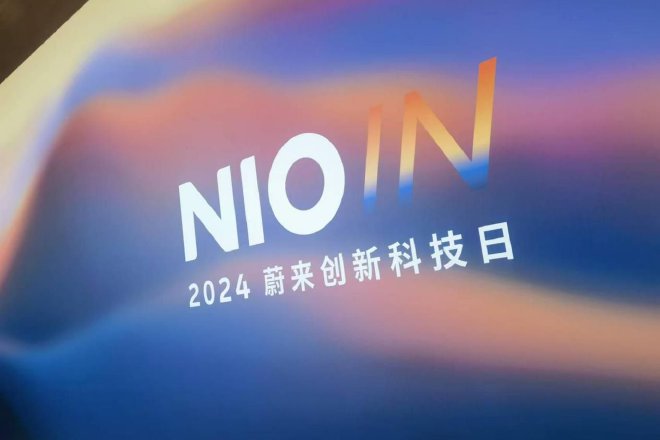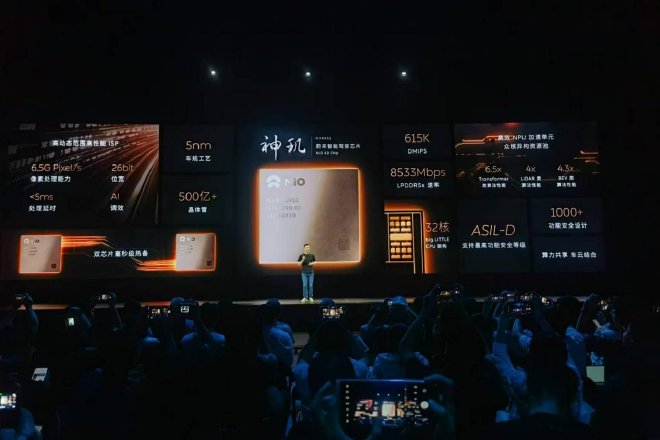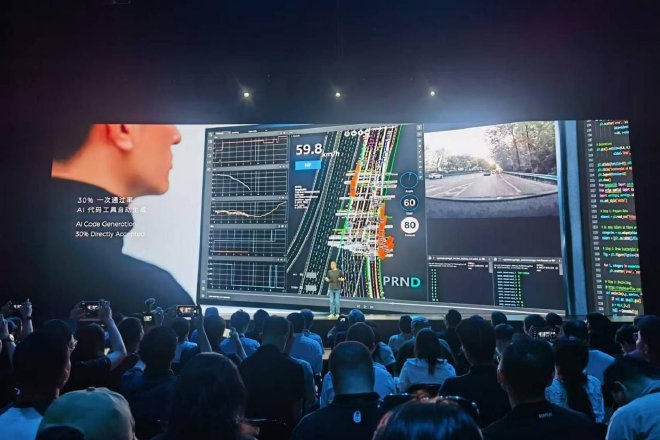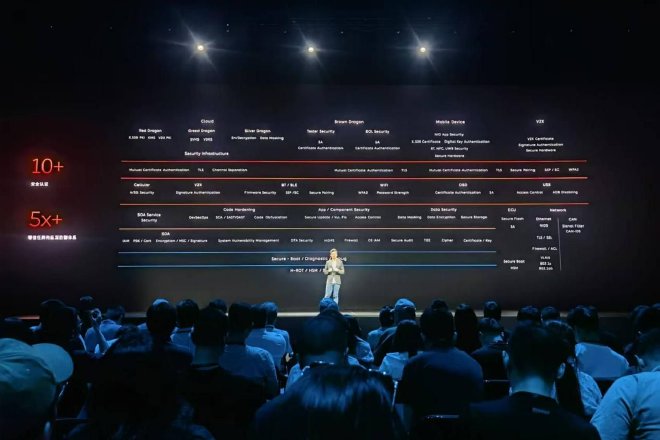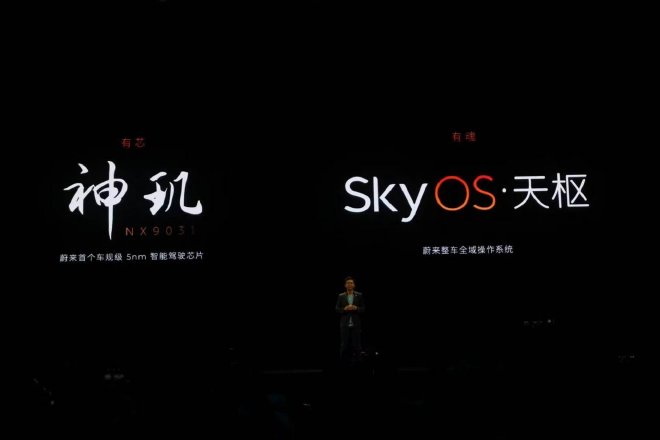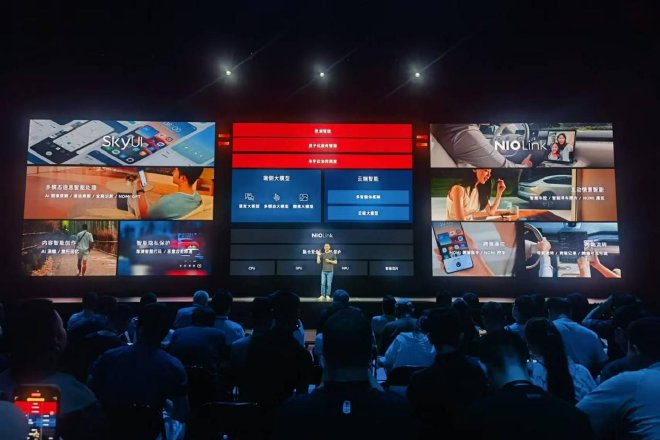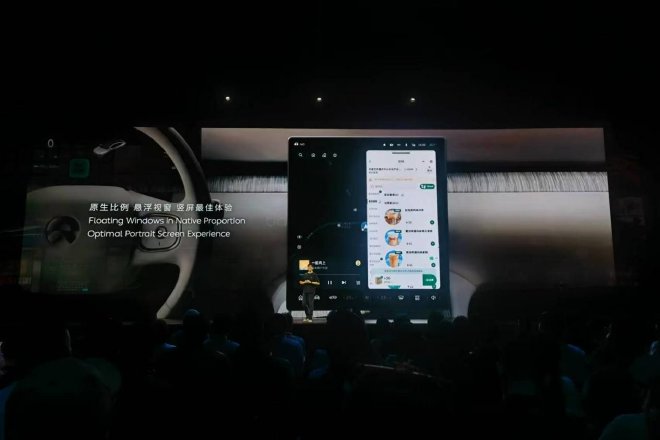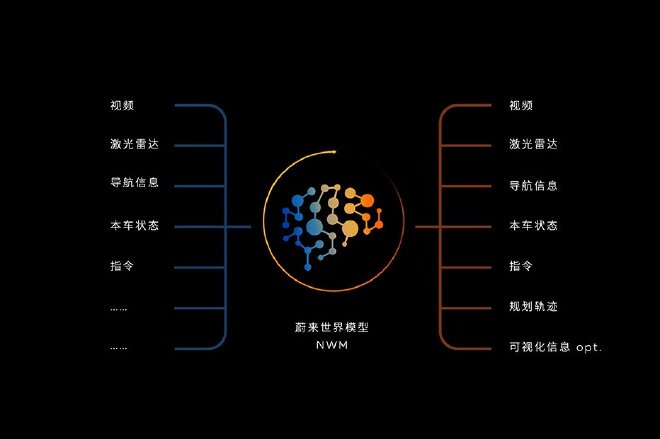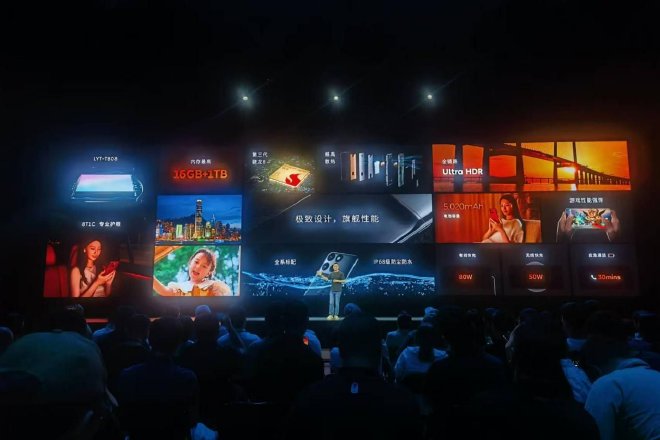On July 27, 2024, NIO held its annual tech event, 2024 NIO IN, in Shanghai. This event showcases NIO’s latest innovations. It serves as a key platform for NIO to present its progress in smart electric vehicles.
At the event, NIO founder, chairman, and CEO Li Bin, along with Vice President of Digital Systems Wang Qiyan, Vice President of Product Experience Li Tianshu, and Vice President of Intelligent Driving R&D Ren Shaoqing, took the stage to share updates. They officially announced the successful tape-out of the NIO Shenqi NX9031 and launched the industry’s first full-vehicle operating system, “SkyOS,” along with the Banyan3 intelligent system and the intelligent driving world model. They also released the second-generation NIO Phone. The NIO Shenqi NX9031 successfully completed its tape-out. NIO announced the world’s first automotive-grade 5nm high-performance intelligent driving chip, the Shenqi NX9031. Li Bin showcased the Shenqi NX9031 at the event. As the industry’s first high-level intelligent driving chip made with 5nm automotive-grade technology, the NIO Shenqi NX9031 features fully self-designed chip and underlying software. The Shenqi NX9031 contains over 50 billion transistors. It can achieve the performance of four flagship industry chips in terms of overall capability and execution efficiency. Specific performance details will be announced later.
The Dimensity NX9031 features a powerful CPU cluster for concurrent task processing. It offers ample memory bandwidth for quick and stable latency handling. Its self-developed ISP enhances image signal processing across all scenarios, ensuring early brake response in emergencies. At the event, real-time comparisons showcased its performance. In low light, the NX9031 outperformed a similar 8-megapixel smart driving camera. This advantage is crucial for smart driving. NIO also stated this chip will support AI-assisted coding, customer service, and intelligent sampling. SkyOS, NIO’s core technology, received attention since its announcement by founder and CEO Li Bin at the NIO IN 2023 event. No complete vehicle operating system has existed in automotive history. At the 2023 NIO Day, NIO unveiled the ET9, equipped with 31 sensors transmitting 43.85G/s data. This demands a robust operating system to manage heterogeneous computing resources efficiently. NIO needed a system to flexibly allocate resources for various applications and maximize computing power. After four years of development and over 23,000 person-months invested, NIO launched the industry’s first complete vehicle operating system, SkyOS. SkyOS is designed for the AI era, featuring high bandwidth, low latency, high computing power, heterogeneous hardware integration, continuous evolution, reliability, and information security. It integrates smart hardware, computing platforms, communication, and energy systems, unifying management of vehicle networking, control, smart driving, digital cockpit, and mobile applications for true vehicle-wide intelligence in the AI era.
SkyOS is the core of NIO’s “1+4+N” technology cluster. It marks a major breakthrough in smart vehicle operating systems. The “1” in the cluster refers to the SkyOS-H virtual machine monitor. SkyOS-H optimizes multiple scenarios with high performance and reliability. It manages and schedules the vehicle’s heterogeneous computing resources. It provides a securely isolated operating environment for various systems. Compared to industry-standard solutions, SkyOS-H reduces real-time task latency by 50%. It increases multi-thread throughput by 40% and boosts virtual disk throughput by 15%.
“4” refers to the four operating system kernels of SkyOS. First, SkyOS-L is lightweight, reliable, and real-time. It supports all mainstream vehicle MCU chip architectures. SkyOS-L improves the timely delivery rate of real-time periodic signals by 30-40% compared to industry-standard solutions. Next, SkyOS-M is a microkernel-based system. It offers high security, reliability, and real-time performance. It serves as the central brain, running advanced control logic for vehicle functions like body and chassis suspension. SkyOS-M’s core advantage is safety isolation. Under similar conditions, its self-recovery speed is 100 times faster than Linux systems. Then, SkyOS-R targets high-performance and deep optimization for various application scenarios. It deploys most functions for intelligent driving. Compared to Linux distributions, SkyOS-R achieves 113 times higher real-time performance under light loads and 20 times higher under heavy loads. It maintains end-to-end communication latency of less than 1ms, ensuring better real-time performance for intelligent driving. Finally, SkyOS-C focuses on deep customization for native intelligence. It supports most smart cockpit functions, enabling low-latency integration of vehicle and cloud. It fully utilizes greater cloud computing resources and models, providing a smarter AI experience in the cockpit.
“N” refers to the SkyOS middleware. It is key for achieving layered decoupling and cross-domain integration. It also supports lifecycle upgrades and ensures information security. SkyOS uses its self-developed SOA framework. It abstracts the entire vehicle into over 1,600 atomic capabilities. It provides services and APIs for various applications in different domains. The custom high-performance cross-domain communication protocol stack, TOX, increases signal capacity by 30-50 times compared to traditional CAN bus. It reduces end-to-end latency by 40% compared to traditional vehicle communication protocols. The maximum zero packet loss threshold improves by 109%.
SkyOS can iterate atomic modules daily. It updates the software platform weekly. It enhances vehicle capabilities monthly. It supports at least 10 years of intelligent upgrades and maintenance with intergenerational compatibility.
NIO announced that the full release of the SkyOS system marks the first time a Chinese automaker has mastered a globally leading full vehicle operating system. This system integrates with NIO’s first automotive-grade 5nm intelligent driving chip, the Godson NX9031, which has successfully entered mass production. This combination of hardware and software, along with computing power and algorithms, ensures a strong foundation. NIO aims to accelerate future product and technology development. The company seeks to enhance the user experience of its intelligent electric vehicles and boost China’s global automotive competitiveness. The new Banyan 3 intelligent system launches soon. It builds on AI core capabilities to provide users with a more personalized and growth-oriented experience. The first version will roll out to users in late August.
Banyan 3’s emotional intelligence relies on AI large model capabilities and a native intelligent system. NIO has created a new NOMI GPT architecture. NIO states that NOMI GPT defines the in-car AI interaction paradigm for large models. NOMI’s interaction experience feels more human and serves as a warmer, more personal emotional companion. Additionally, NIO introduces the NOMI Agents multi-agent architecture. NOMI’s cognitive and complex task handling abilities enhance the cabin experience, evolving from basic functions to proactive intelligence.
NIO launched the SkyOS-C digital cockpit with a full-stack architecture and multiple AI models. It features new AI-native applications and personalized services. Flux lightweight applications and in-car mini-programs also debuted. The system offers 4D comfort navigation and a rear-seat luxury mode. All AI cockpit applications enhance the Banyan 3 intelligent system’s immersive and personalized experience. NIO released China’s first intelligent driving world model, NWM. This model is a diverse, self-regenerative generative driving model. It can fully understand data and has long-term reasoning and decision-making abilities. It can simulate 216 potential scenarios within 100 milliseconds to find the optimal decision.
NWM generates videos up to 120 seconds long from a 3-second driving clip. It features built-in closed-loop simulation testing. NWM has tested and validated its performance in complex interaction scenarios. NIO’s NADArch 2.0 intelligent driving technology architecture has launched. NADArch 2.0 upgrades the algorithm layer to an end-to-end architecture with world models. It generates driving decisions directly from raw sensor data, reducing information loss found in traditional solutions. Its prediction capabilities are stronger, making the intelligent driving experience safer and more human-like. Smart driving based on NADArch 2.0 will roll out in phases later this year. The new NIO Phone has launched. This second-generation model comes in three configurations: performance version at 6499 yuan (900$), flagship version at 6899 yuan (960$), and EP edition at 7499 yuan (1040$). Besides being available on the NIO App, it will also sell on JD.com and Douyin for the first time. Pre-orders start today.
The new model looks similar to the old one. It features a 6.82-inch quad-curved screen with a central punch hole. The bending depth measures 724μm. The back panel offers three materials and six colors. All colors draw inspiration from NIO cars and their classic interiors. The special edition Nebula Red has a fully matte design. The EPedition version uses ink-engraved ceramic with a classic red skyline trim.
The new NIO Phone features the Qualcomm Snapdragon 8 GEN 3 processor. It offers up to 16GB RAM and 1TB storage. The phone includes the Gunyu cooling system, which covers 100% of the heat sources. The battery holds 5050mAh. It supports 80W wired fast charging and 50W wireless fast charging.
